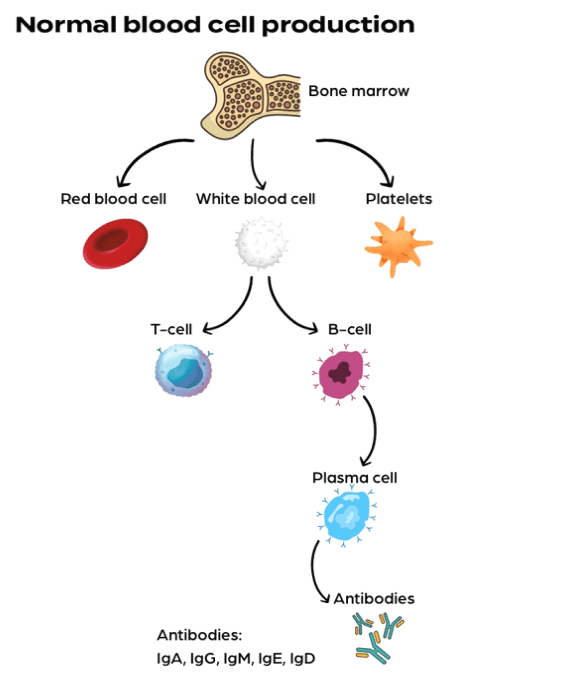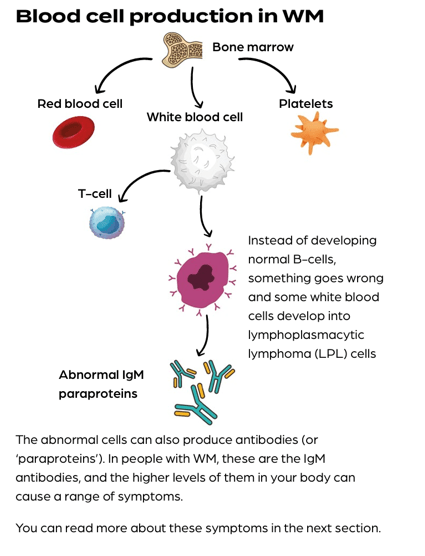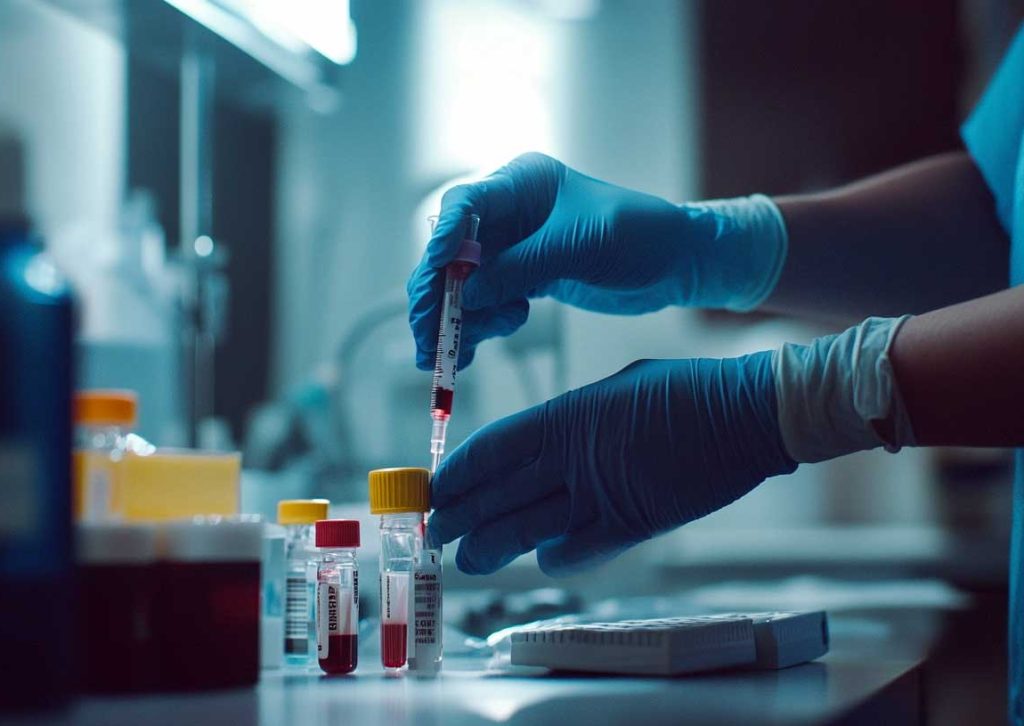Waldenstrom’s macroglobulinaemia (WM) is a rare, slow-growing blood cancer, classified as a type of lymphoplasmacytic lymphoma (LPL). It develops when B-cells—a type of white blood cell—develop abnormally and multiply uncontrollably. These faulty cells crowd out healthy blood cells, preventing them from working properly.
B-cells are part of the immune system. They develop in the bone marrow and become plasma cells, which produce antibodies (immunoglobulins) that help fight infections. Healthy B-cells make five antibody types: IgM, IgG, IgA, IgE and IgD.


People with WM develop abnormal B-cells known as lymphoplasmacytic lymphoma cells that produce large amounts of a faulty protein called IgM paraprotein.
IgM is the largest of the five types of antibody, and helps the body to fight infections.
As these cells accumulate, they crowd out the other types of blood cell and make the blood thicker. This leads to symptoms like fatigue (due to low red cells), frequent infections (due to low white cells), and easy bruising (from low platelets).


Researchers are exploring how gene mutations influence the development of WM and its response to treatment. They hope this work will eventually lead to more personalised treatments.
WM is a type of lymphoplasmacytic lymphoma (LPL), which is a collective term for slow growing cancers that occur when certain white blood cells, called B-cells, don’t develop properly.
About 19 out of every 20 people with a lymphoplasmacytic lymphoma (LPL) have WM. While WM patient produce an abnormal amount of the protein IgM, LPL patients without WM produce large amounts of a different abnormal protein (usually IgG) or no proteins at all.
Most cases of WM, (more than 90%) involve a mutation in the MYD88 gene. This gene normally acts as a messenger but, when faulty, sends a false signal that causes cells to grow and survive unnecessarily.
Around 30% of WM patients also have a mutation in the CXCR4 gene, which further encourages faulty cell growth and keeps these cells trapped in the bone marrow crowding our healthy cells. There are other rarer gene mutations which may also influence how WM cells behave.
There are a number of treatment options available for WM while research continues into new therapies.
One area of interest is the BTK protein, which helps B-cells grow, survive, and multiply. BTK is like a switch that helps faulty B-cells (such as those in WM) receive signals to stay alive and keep dividing. BTK inhibitor drugs turn off that switch, cutting off the growth signals and preventing the cells developing. Drugs like ibrutinib, zanubrutinib, and acalabrutinib are examples of BTK inhibitors.
Another emerging option is CAR T-cell therapy, where cells known as T-cells are taken from a patient and modified in a laboratory. The modified cells, known as CAR T-cells, are then put back into the patient, where they target and kill the faulty B-cells. Though not yet approved for WM, it’s currently in clinical trials.

This little booklet is for those diagnosed with WM and family and friends. It covers all the basics about WM, including what it is, how it’s treated and how to live well with the disease.